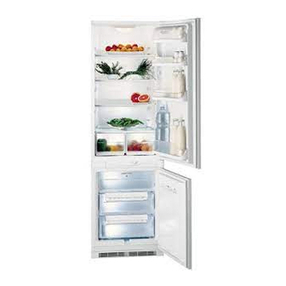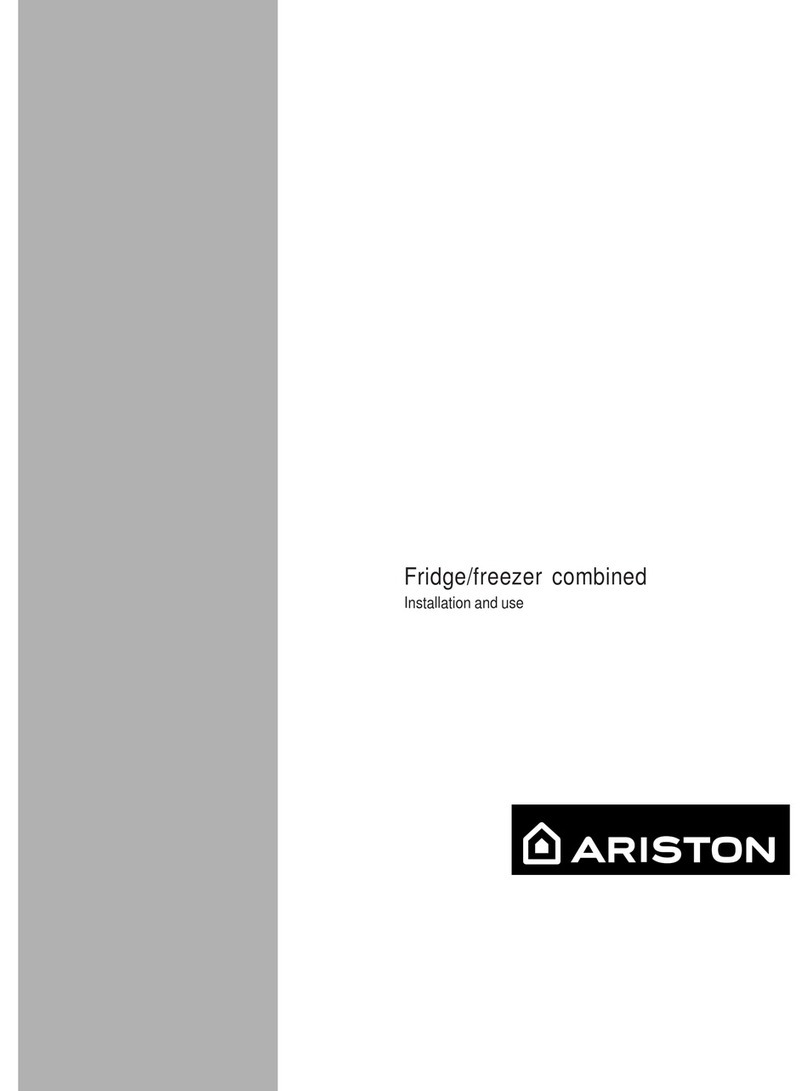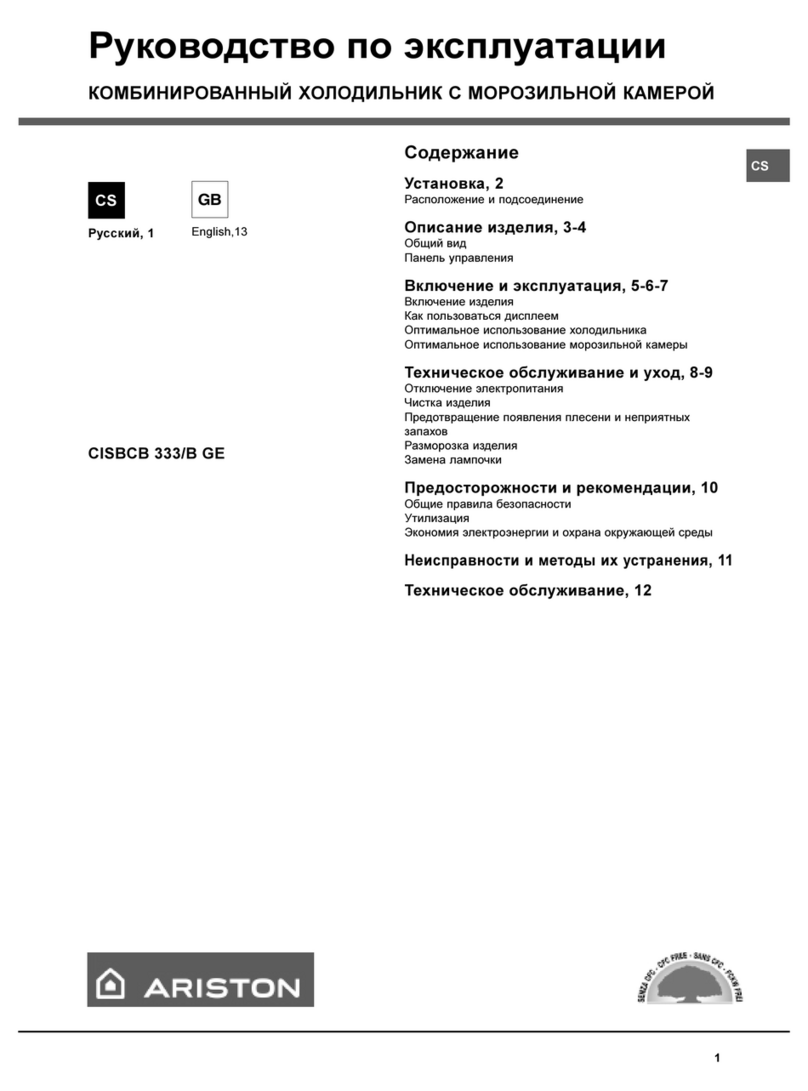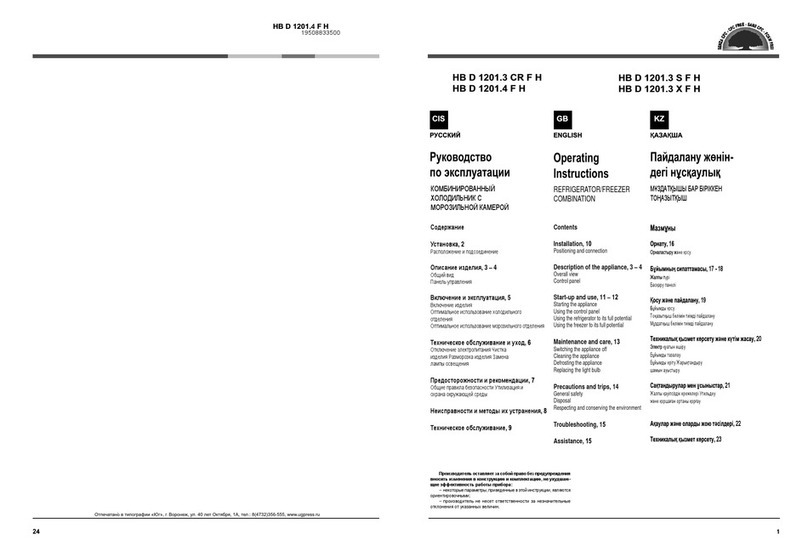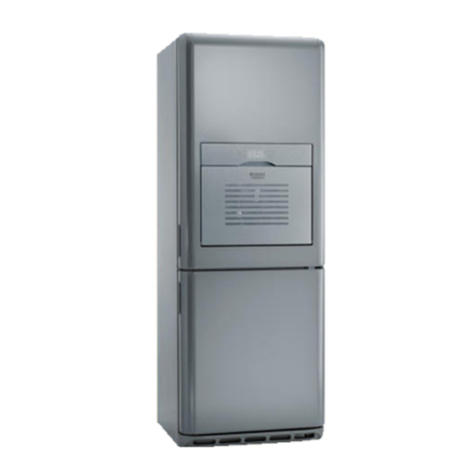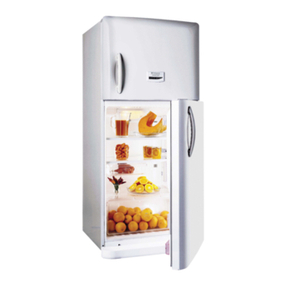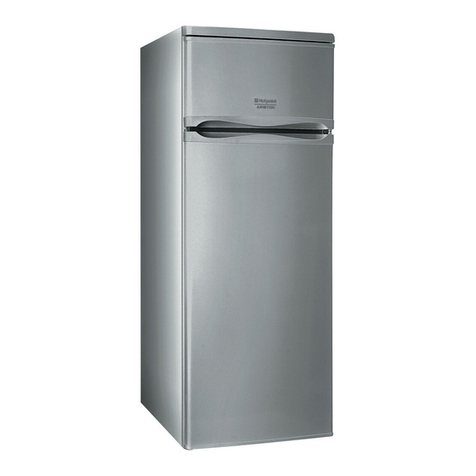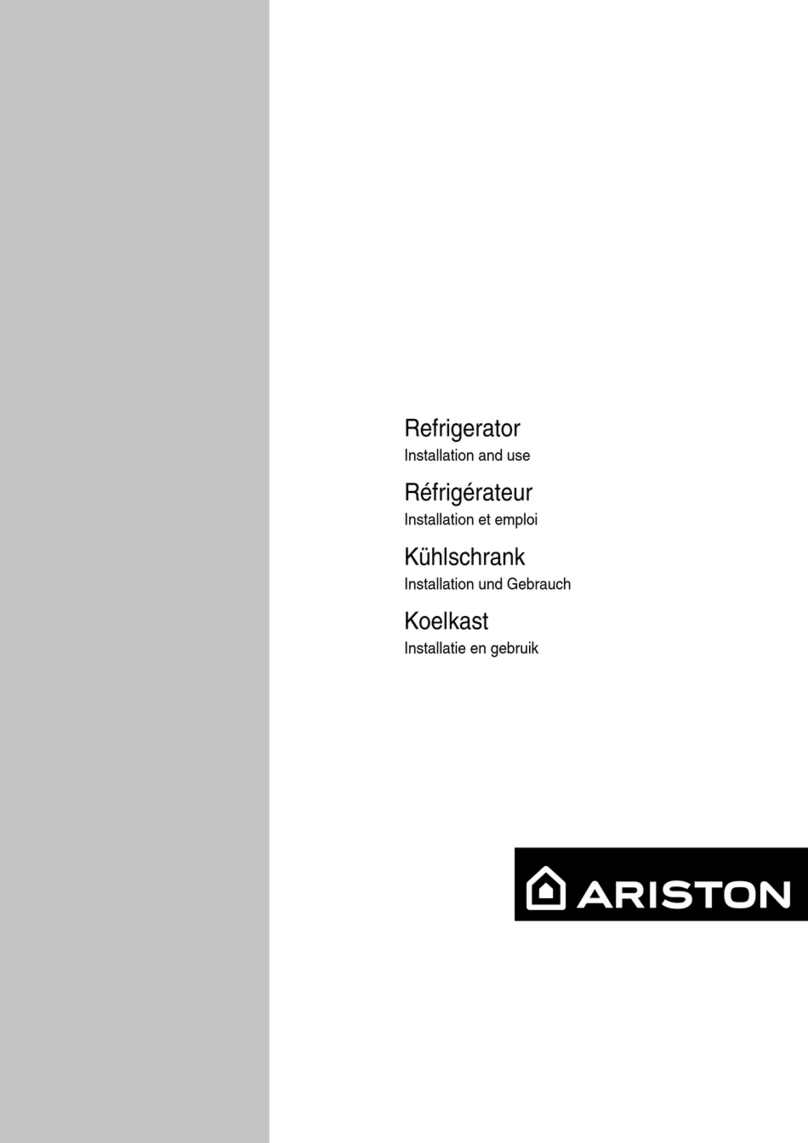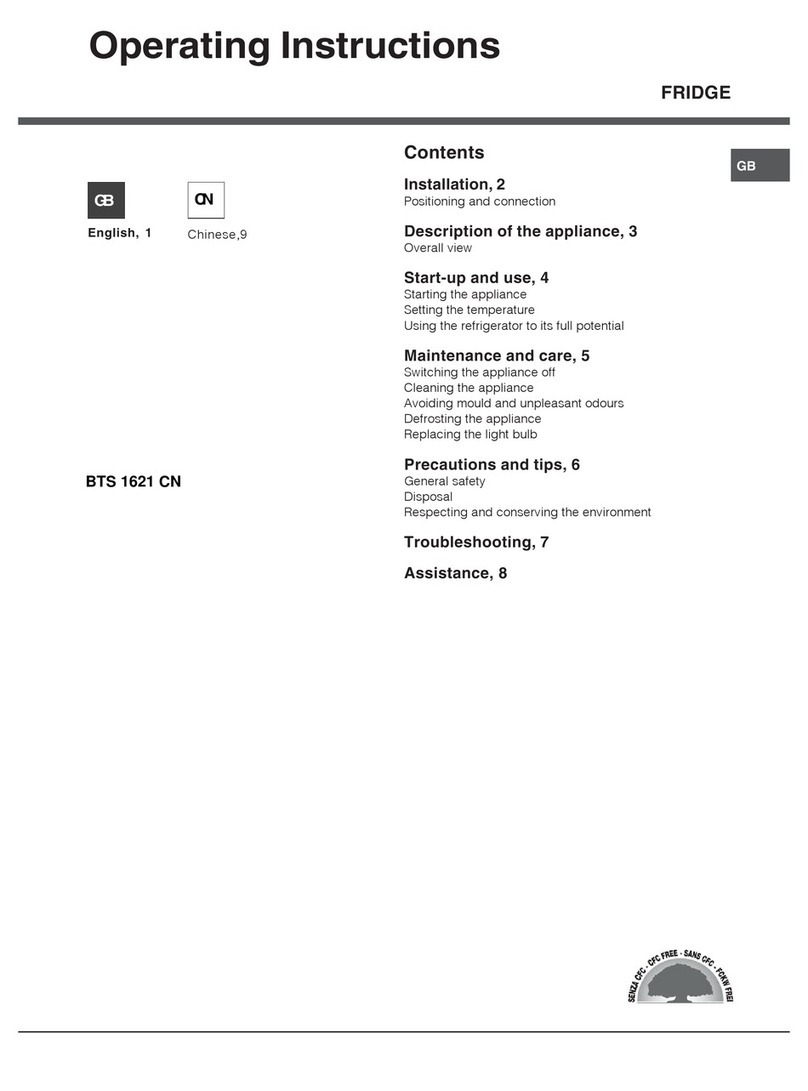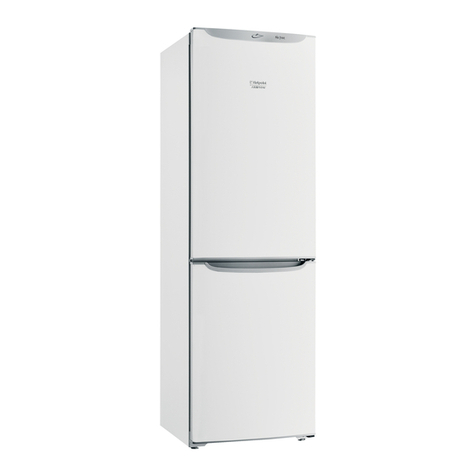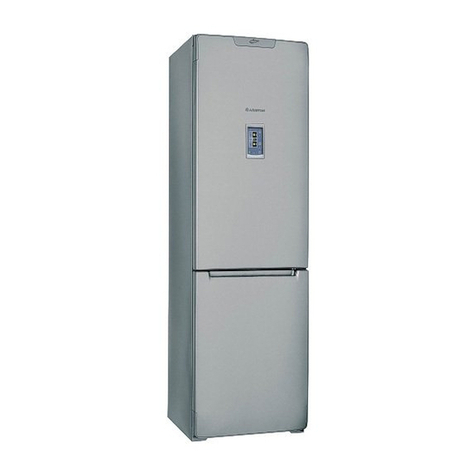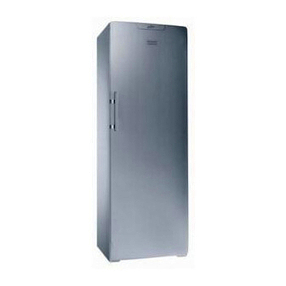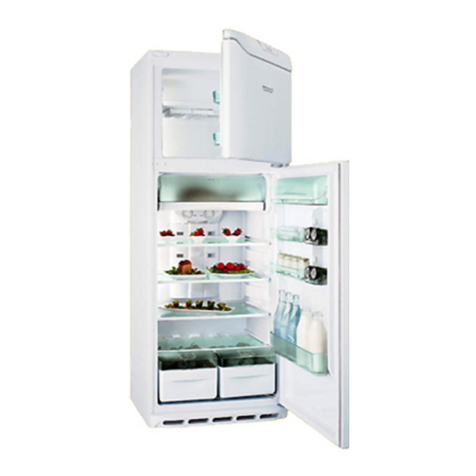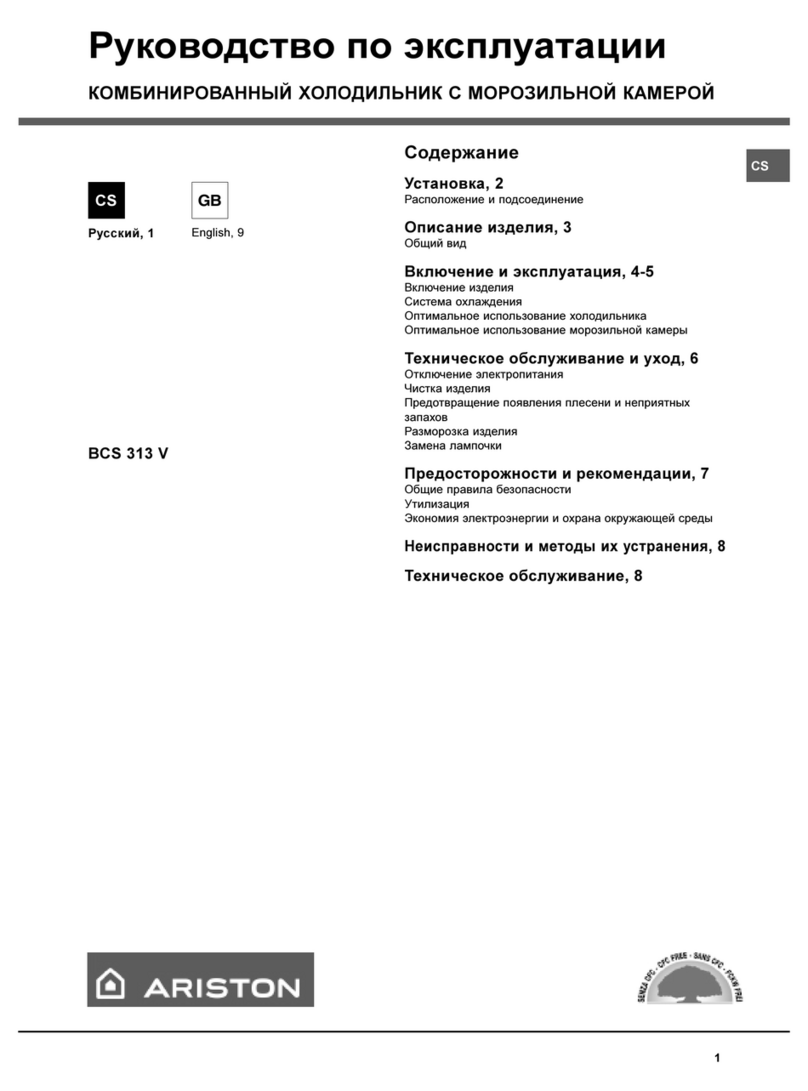7
TR
Önlemler ve öneriler
! Cihaz, uluslararasý güvenlik normlarýna uygun olarak
tasarlanýp üretilmistir. Asagýdaki bilgiler, güvenligi
saglamak amacýyla verilmistir. Bu yüzden dikkatlice
okunmasý gerekir.
Bu cihaz asagýdaki AB Yönergeleri ile
uyumludur:
- 19/02/73 tarihli EAT/73/23 (Düsük Voltaj
Yönergesi) ve sonraki degisiklikler;
- 03/05/89 tarihli EAT/89/336 (Elektromanyetik
uyum) ve sonraki degisiklikler;
- EAT/2002/96.
Genel güvenlik uyarýlarý
Cihaz meskenlerde kullanýlmak üzere tasarlanmýs
olup pro esyonel kullaným amaçlý degildir.
Cihaz sadece gýda saklamasý için, yetiskinler
tara ýndan ve bu kitapçýktaki talimatlar çerçevesinde
kullanýlmalýdýr.
Cihaz, üzeri kapalý bile olsa açýk alanlara monte
edilmez, zira yagmur ve ýrtýnaya maruz kalmasý son
derece tehlikelidir.
Cihaza ayaklarýnýz çýplakken yada elleriniz veya
ayaklarýnýz ýslak yada nemliyken dokunmayýnýz.
Buzdolabýnýn sogutma yapan iç kýsýmlarýna
dokunmayýnýnz: yanma veya yaralanma tehlikesi vardýr.
Fisi prizden çekerken kablosundan degil isin
kendisinden tutarak çekiniz.
Temizlik ve bakým isleminden önce is elektrik
sebekesinden çýkarýlmalýdýr. Buzdolabýnýn tüm elektrik
baglantýlarýný kesmek için (cihaz kapalý) ýsý ayar
dügmesini 0 konumuna getirmek yeterli degildir.
Arýza halinde onarmak amacýyla iç mekanizmalarý
kurcalamayýnýz.
Dondurulmuþ gýda saklama kaplarýnda üretici
tara ýndan tavsiye edilen tip hariç ucu sivri ve keskin
aletleri kullanmayýnýz.
Buz küplerini dondurucu bölmesinden çýkarýr
çýkarmaz agzýnýza sokmayýnýz ve yemeyiniz.
Çocuklarýn cihazla oynamasýna izin vermeyiniz.
Kesinlikle çekmece üstüne oturmamalý ve kapýya
tutunup sarkmamaldýr.
Ambalaj çocuk oyuncagý degildir.
Atýklarýn tasfiye edilmesi
Ambalaj malzemelerinin tas iye edilmesi: yerel
normlara uygun olarak tas iye ediniz, böylece tas iye
edilen malzemelerin geri donusumu saglanmýs
olacaktýr.
Eletrik ve eletronik cihazlarýn atýklarýný
degerlendirme 2002/96/CE sayýlý Avrupa Konseyi
direkti inde; beyaz esyalarýn kentsel katý atýk genel
yöntemi ile tas iye edilmemesi öngörülmüstür.
Kullanýlmayan cihazlarýn, madde geri kazaným ve
geri dönüsüm oranýný en yüksek seviyeye
yükseltmek, çevre ve insan saglýgýna olasý zararlarý
engellemek için ayrý ayrý toplanmasý gerekir. Tüm
ürünlerin üzerinde; ayrý toplama hükümlerini
hatýrlatmak amacýyla üstünde çarpý isareti olan
sepet sembolü verilmistir. Cihazlarýn tas iye edilmesi
konusunda daha genis bilgi almak için cihaz
sahiplerinin mevcut müsteri hizmetine veya satýs
noktalarýna basvurulmasý gerekir.
Enerji tasarrufu ve çevre korumasý
Buzdolabý dogrudan günes ýsýgýna maruz
kalmayacak, serin ve havadar uygun bir yere
yerlestiriniz. Ayrýca, ýsý kaynaklarýndan uzakta
olmalýdýr.
Gýdalarý almak ya da yerlestirmek için cihazýn
kapagýný mümkün oldugu kadar az açýk tutunuz.
Buzdolabýnýn kapagý her açýldýgýnda enerji tüketilir.
Cihazý azla gýda ile doldurmayýnýz: gýdalarýn iyi
saklanmasý için soguk hava dolasýmýnýn saglanmasý
gerekir. Hava dolasýmýnýn engellenmesi durumunda
kompresör devamlý çalýsmak zorunda kalacaktýr.
Buzdolabýnýn içine sýcak gýda koymayýnýz: ýsý
derecesi yükselir, kompresör yogun çalýsmak
zorunda kalýr ve enerji büyük miktarda tüketilir.
Buz olusmasý durumunda eritme yapýnýz (Bakým
bölümüne bakýnýz); kalýn bir buz tabakasý sogutmayi
engeller ve enerji tüketimini yükseltir.
